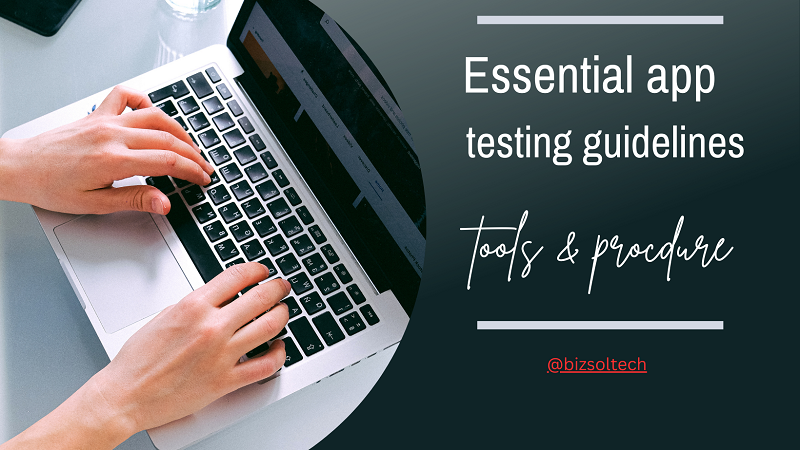Picture this: you’ve poured your heart and soul into crafting the next best app. It’s sleek, innovative, and destined to revolutionize.
Launch day arrives, confetti rains down (metaphorically, of course), and… disaster strikes.
The app crashes under user load, reviews plummet faster than a dropped phone, and your dreams of app domination vanish quicker than a server on Black Friday. Brutal, right?
This cautionary tale could have been avoided with one crucial ingredient: a proper quality assurance (QA) team and the testing guidelines they champion.
Here’s why neglecting them can turn your app’s debut from a triumphant march to a comedic faceplant.
Let’s face it, developers are a breed of creators. We take pride in crafting elegant code, building intricate systems, and bringing ideas to life.
But the truth is, even the most brilliant code can crumble under real-world pressure.
Mobile apps lose on average 77% of their users within the first 3 days after sign-up.
But here’s the thing: effective testing isn’t just about throwing warm bodies at the problem. It’s a strategic dance between planning, execution, and iteration.
As a developer who’s seen his fair share of pre-launch pandemonium, I’m here to share some essential testing guidelines that will turn your project from a potential disaster into a polished masterpiece.
1. Define Your Testing Goals: Sharpen Your Spear
Before you unleash the QA team, take a deep breath and get clear on your testing goals. What are you trying to achieve?
Is it rock-solid functionality?
User-friendliness?
Performance under heavy load?
Defining clear goals helps prioritize testing efforts and ensures everyone’s on the same page.
Think of it this way: You wouldn’t charge into battle without a plan. Similarly, don’t subject your application to a random barrage of tests. Identify your testing targets, just like a skilled warrior chooses the most vulnerable points in their opponent’s armor.
2. Embrace a Multi-Tiered Approach
Not all bugs are created equal. A minor typo is a nuisance, but a security vulnerability can be catastrophic. That’s why a multi-tiered testing approach is essential.
Here’s the breakdown, with some of the latest tools and procedures:
- Unit Testing: The foundation. Developers test individual units of code to ensure they function as intended. Here, you’re the blacksmith, meticulously checking each piece of your sword before assembly. Tools: JUnit (Java), PHPUnit (PHP), Jest (JavaScript)
- Integration Testing: Once your code is forged, it’s time to see how the pieces work together. Integration testing ensures different modules interact seamlessly. Here, you’re the swordsmith, testing how the blade fits the hilt and guard. Tools: Postman (APIs), SoapUI (Web Services)
- System Testing: Now, let’s see the entire system in action. System testing evaluates the complete application against defined requirements. Here, you’re the knight, putting on your full armor and testing its functionality in a mock battle. Tools: Selenium (web applications), Appium (mobile applications)
- Acceptance Testing: The final frontier. Acceptance testing involves real users or stakeholders putting the application through its paces. This ensures it meets their expectations and needs. Tools: UserTesting (remote user testing), UserLeap (user behavior analytics)
3. The Art of the Unexpected: Think Like a Hacker (But Ethically)
While functional testing is crucial, don’t underestimate the power of breaking things (ethically, of course).
A good QA team will think like a hacker, pushing the application beyond its normal limits with tools like penetration testing frameworks (e.g., Kali Linux) to identify and address potential vulnerabilities before they become real-world problems.
Imagine this: You build a castle with thick walls, but forget to test the gate. A clever enemy could exploit this weakness and breach your defenses. Similarly, your application might be robust under normal conditions, but a surge in traffic or an unconventional user action could expose a hidden security flaw.
4. Automation is Your Friend:
Testing every single scenario manually can be a soul-crushing endeavor. That’s where automation comes in.
By automating repetitive tests using frameworks like Cypress or Robot Framework, you free up your QA team to focus on more complex scenarios and exploratory testing.
However, remember, automation is a tool, not a replacement for human ingenuity. Don’t blindly rely on automated scripts; ensure they’re well-designed and maintained.
Think about it: You wouldn’t build a whole army of robots to defend your castle. Automation is like having a loyal squire to handle mundane tasks, freeing you, to focus on strategic maneuvers.
5. Communication is Key: Building Bridges, Not Walls
Testing isn’t a solitary exercise. It’s a collaborative effort between developers, QA testers, project managers, and stakeholders.
Clear communication is key.
Bugs need to be reported efficiently using bug tracking tools like Jira or Asana, understood clearly, and addressed promptly.
Regular progress reports and transparent discussions about challenges and roadblocks ensure everyone is aligned and working towards the same goal.
So, how do you avoid replicating app’s unfortunate launch?
Here’s the truth: building a stellar app requires a multi-faceted approach. While this writing equips you with essential testing practices, partnering with a professional development services company can be the ultimate game-changer.
The house seasoned developers alongside dedicated QA teams. They leverage testing tools and refined methodologies to ensure your app undergoes rigorous scrutiny at every stage.
By joining forces with such a team, you can launch your app with confidence, knowing it’s been tested and user-ready.
No more launch-day nightmares, just watching your app climb the charts as you envisioned. So, ditch the solo act and embrace the power of collaboration.
Invest in a reliable development services company, and watch your app soar.



